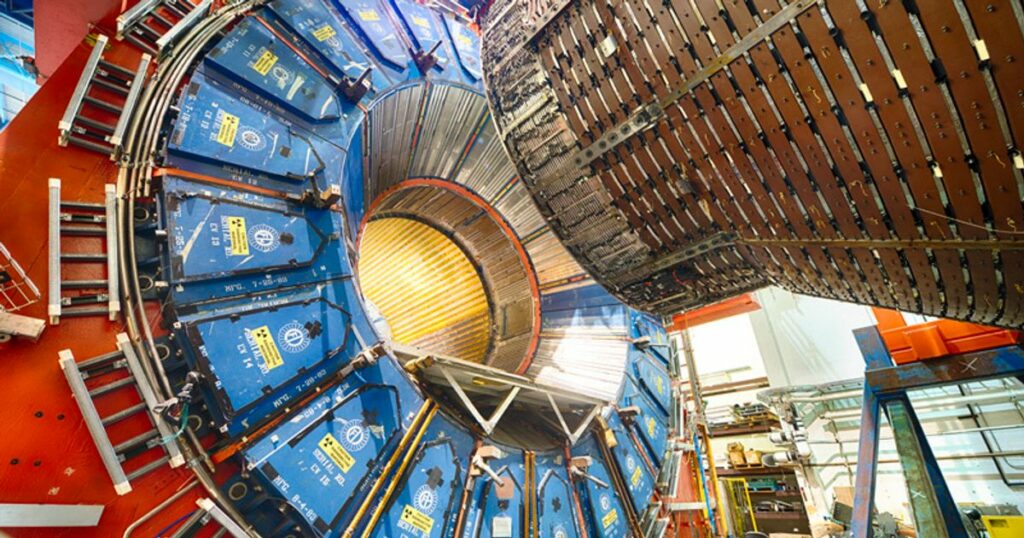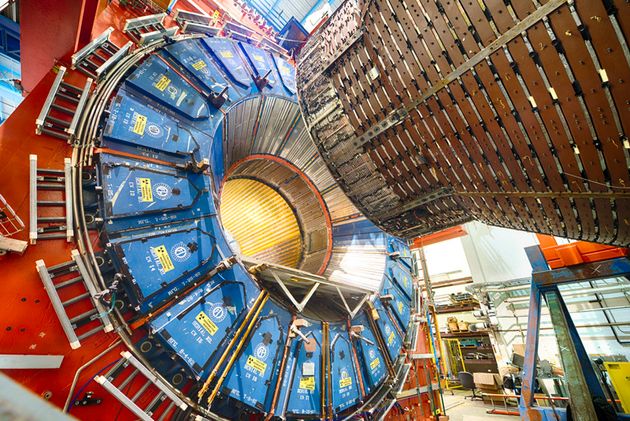Fermilab/twitter
SCIENCE – This could well be a major physical discovery, changing all laws known to date. Physicists have discovered that one of the 17 elementary particles known to physics, the W boson, is 0.1% heavier than expected. Reported in the magazine Science on April 7, this new measurement comes from the particle accelerator of the Fermilab laboratory in the United States (or CDF), specialized in the physics of high-energy particles.
If this mass difference may seem small, it could however presage an upheaval in fundamental physics. « It would be a complete shift in the way we see the world, » potentially even rivaling the 2012 Higgs boson discovery in significance, says for Quanta-magazine, Sven Heinemeyer, a physicist from the Institute of Theoretical Physics in Madrid. Indeed, it would entail the first major rewrite of the laws of quantum physics in half a century.
Change model
Concretely, if the mass of this particle is actually heavier than previously estimated, this modifies all the physical laws. Imagine a Tetris game. Each particle constitutes a piece, forming a perfect whole. Only, if one of the parts gets bigger, then the whole thing no longer works. It is therefore necessary to rearrange the whole, by modifying the shape of the parts, or even adding new ones to find the exact balance.
In this way, if the W boson has a slightly heavier mass, this means that the current physical laws are no longer good, and that a new model must be found explaining the functioning of the universe, from the stars to the everyday objects.
Indeed, everything around us is made up of subatomic particles of matter. They are divided into two families: quarks (like neutrons and protons, elements forming the nucleus of atoms) and leptons (like electrons). In total, 12 elementary particles are listed today, forming the category of fermions.
These particles of matter interact with each other. To do this, another type of particle must intervene: interaction particles. Called bosons, they are four in number, not counting the exception of the Higgs boson (or god particle). It is the particles of interaction that are at play in three of the fundamental forces.
In total, there are four forces and they define the standard model of fundamental physics: the strong force, the weak force, the electromagnetic force and the gravitational force. If the first three interact with each other, gravity is (for now) a special case.
Although it is the force with which we are most familiar, physicists have struggled to find a place for it in the standard model, even though the particle carrying gravity (theoretically the “graviton”) has not yet been observed. This is the reason why it is not present in the table below:
Wikipedia/Elementary particles
The particle that interests physicists here is called the W boson, one of the sources of the weak force. To calculate its mass, the physicists based themselves on an analysis of around 4 million W bosons produced at the Tevatron (name of the CDF particle accelerator) between 2002 and 2011.
This discovery comes at a time when the physics community is hungry for flaws in the standard model of particle physics. Indeed, the Standard Model is known to be incomplete, leaving several great mysteries unsolved, such as the nature of dark matter.
« It’s monumental work, » said Frank Wilczek, a Nobel Prize-winning physicist at the Massachusetts Institute of Technology. « Overall, I feel like we’re approaching the point where something is going to break, » El-Khadra said. “We are getting closer to the time when we can really see beyond the standard model.”
Caution is advised
However, no one is popping the champagne yet. While the new W mass measurement, taken in isolation, deviates dramatically from the Standard Model prediction, other experiments weighing the W boson have yielded less spectacular results.
In 2017, for example, the ATLAS experiment at the Large Hadron Collider in Europe (a 27km-circumference particle accelerator, the largest and most powerful in the world) measured the mass of the W particle and found that it was only a bit heavier than what the standard model says.
It is important to understand the difference in measurement between the two labs. Indeed, as Guillaume Unal, a physicist at CERN (the laboratory that houses the Large Hadron Collider), asserts, “the W boson must be the same on both sides of the Atlantic”.
See also on The HuffPost: This “canyon of fire” appeared on the Sun is 5 times the size of the Earth



